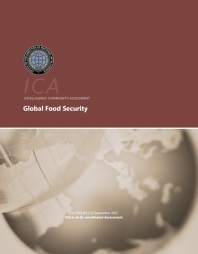
Global Food Security

Authors’ note
Bottom Line: We judge that the overall risk of food insecurity in many countries of strategic importance to the United States will increase during the next 10 years because of production, transport, and market disruptions to local food availability, lower purchasing power, and counterproductive government policies. Demographic shifts and constraints on key inputs, such as land and water, will probably compound the risk. In some countries, declining food security will almost certainly contribute to social disruptions and political instability. Simply growing more food globally will not lead to more food-secure countries because sustainable access will remain unequal; millions lack access to land or income sources to buy sufficient food. We judge that augmenting traditional approaches to agricultural development with lesser-used strategies—such as reducing crop and food waste, generating off-farm income activities, conducting research in minor crops, and fostering technical education in agriculture—would improve the resilience of local and global food systems. Such strategies can help Washington and its allies to develop creative complements to standard approaches and help resolve inherent tensions between goals such as producing more food and conserving water and other natural resources.
- Issue:
- Natural Resources
- Region:
- Global
- Year Published:
- 2015
- Institution:
- National Intelligence Council (NIC)
- Tag:
- Food security

